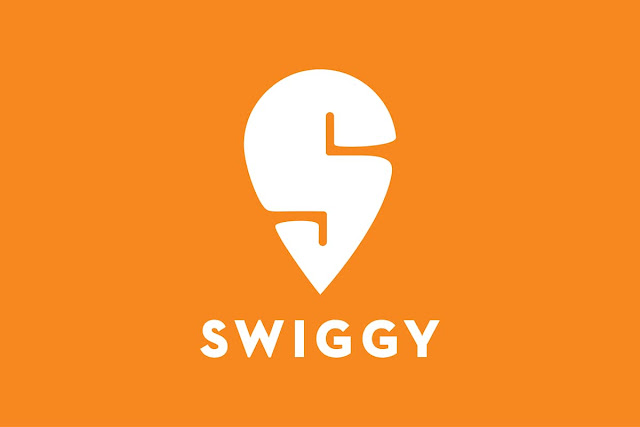Swiggy's $1billion funding does not mean it can win the food delivery sweepstakes
Swiggy has competition from other food delivery companies and even ride-hailing companies Uber and Ola have entered the market.

How Swiggy uses the $1billion or Rs 7,000 crore it has raised from existing and new investors, will determine if it can take a convincing lead in the food delivery market. On December 20, food delivery company Swiggy raised $1 billion from existing investors Naspers, DST Global, Meituan Dianping, Coatue Management and new investors Tencent, Hillhouse and Wellington Management Company.
While this round of funding values Swiggy at $3.3 billion, it may not be enough to ensure the five-year old start-up hogs the last mile to the Indian consumer’s stomach. Food delivery in India is still a top-town phenomena, and the market is overcrowded due to low-entry barriers.
Swiggy has competition from other food delivery companies and even ride-hailing companies Uber and Ola have entered the market. These companies too are well-funded, even though food is not their core offering. Uber Eats and Ola's FoodPanda will keep investing in food delivery. That means competition will keep getting tougher. Plus, there’s Zomato with a wider presence and it is also raising funds.
True, Swiggy has grown fast in the past six months. It added 42 cities, and its gross merchandise value doubled. But it is not easy to sustain that pace of growth. Even Swiggy co-founder Sriharsha Majety, in an e-mail to employees after the latest round of fund raising, said: "Fundraising makes sure we don’t lose but does not make sure we win."
Majety has also said, in an interview in August, that Swiggy’s priority is growth, and not profitability. To be sure, Swiggy does not make money. It reported a loss of Rs 397 crore in the year to March 2018, up from Rs 205 crore the previous year. Its revenue was Rs 468 crore in FY2018, as compared with Rs 146 crore the year ago.
Still, investors were convinced by Swiggy’s growth plans, enough to fork out $1billion in hard cash. Now, Swiggy has to find a niche or a business model, where it earns enough from supplying food to consumers.
It is debatable if plain food delivery can be that model. Swiggy’s gross merchandise value doubled due to fresh customer acquisition. Most of these customers turned to Swiggy because of the discounts on offer.
If discount is the driver then more can play that game. Everyone in this space offers discounts, and higher the discount, more are the orders.
Consumers need to be able to see what makes Swiggy better than its rivals, such as Zomato, Uber Eats, Ola's FoodPanda, or others. All of them are going hyper local, and most restaurants are there on all these food delivery platforms.
This market will remain hyper-competitive, with a scramble to sign on restaurants and consumers and become a permanent link between the two. There were some 400 food delivery apps that were functioning between 2013 and 2016 in India, with most of them serving one or two cities. Every now and then, new hyper-local firm enter the food delivery market, forcing the bigger players to fight back.
If discount is the strategy to build scale, then fund-raising becomes the main fuel. But raising money may not be easy going forward. Also, this market has seen new firms such as artificial intelligence based Dishq and B2B player HungerBox that are attracting investor interest.
Swiggy has said it wants to use the money for expansion, to enter new hyper-local services, and next-generation technology such as artificial intelligence. These are expected to help the company find new areas of growth.
Some of the funds raised are likely go towards discounts too. Besides, Swiggy has been investing in food-making companies to establish kitchens dedicated to food delivery. There is the risk that some of these companies will take their business to other food delivery apps later.
The company expects to use the raised funds over next 2-3 years. But, if rivals also raise funds and pump in more money, then Swiggy's Rs 7,000 crore will burn sooner.
Though it may not be an apple-to-apple comparison, this could lead Swiggy to a Flipkart-like situation. When Flipkart, India’s e-commerce poster boy, raised $1 billion in 2014 it was considered to be a clear winner. But the company went through many rounds of fund raising, to keep pace with rival Amazon, and finally got sold to Walmart earlier this year.
A lot also depends on how much the market for food delivery expands. This is a problem area at present. India is a country where people predominantly cook at home. That’s why, even after 10 years, food delivery is still restricted in around 4,000 PIN codes, while e-commerce covers about 97 per cent of 19,100 PIN codes in the country. Food delivery will be more popular in metro markets.
However, some factors could help Swiggy stay ahead. Just as it it acquired 48East in December 2017 and Scootsy in August 2018, Swiggy can acquire smaller, city-specific hyper-local firms for expansion and consolidate its hold in these markets. But, that would require a lot of money, and Swiggy will have to do multiple rounds of fund-raising. Even then, it still risks meeting the same fate as Flipkart did.
Source: https://www .moneycontrol.com/news/business/startup/quick-take-swiggys-1billion-funding-does-not-mean-it-can-win-the-food-delivery-sweepstakes-3316741.html
Visit: TradeIndia Research
Whatsapp User Join Our Group: 9300421111






Such a useful information, Thanks for sharing this Forex trading tips
ReplyDeleteMMMFS STOCK FUTURE SELL TATASTEEL 486.50 TGTS 485-483-481 SL AT 489 LS 1061
ReplyDeleteSTOCK FUTURE SELL TATASTEEL ACHIEVED TGT1 BOOK SOME PROFIT @485
Stock Future Tips
STOCK OPTION BUY IBULHSGFIN 760 PE ABOVE 45.10 TGTS 47-50-53 SL AT 38.10 LS 500
ReplyDeleteTwo Days Free Trial
Hi, it is really very helpful post. keep posting.
ReplyDeleteFree Commodity Tips.